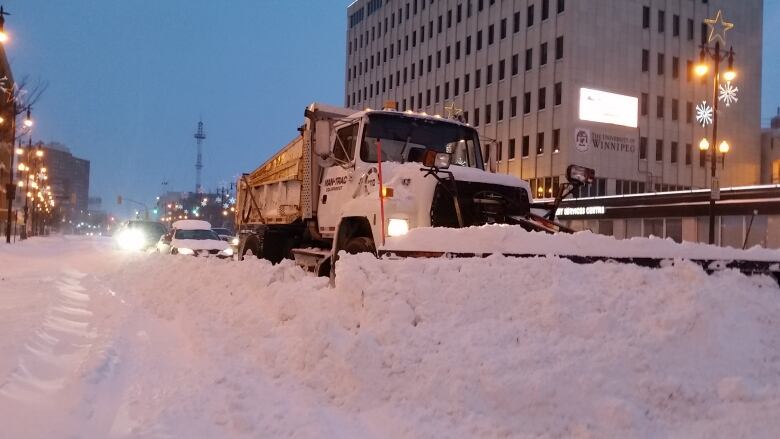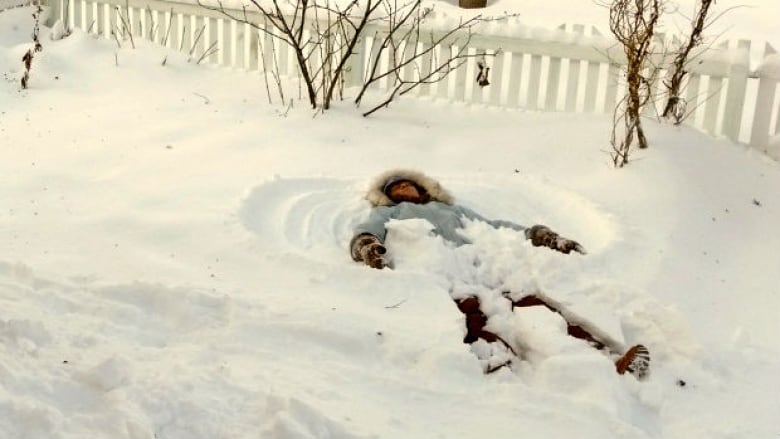Legends of the snowfall: Busting a few myths about Winnipeg's winter
We're cold, but not the coldest city in the world. And we're nowhere near the snowiest.

If there's one thing Winnipeggers do better than complain about the winter, it's exaggerate how bad it is. For some irrational reason, we love to pretend it's more brutal in the Manitoba capital than it really is.
Over the past week, high temperatures in Winnipeg hovered around the -20 C mark. That's cold by any objective standard, but not cold enough for science-spiting weirdos, who equate temperature with the rate of cooling, otherwise known as wind chill.
There was a time when meteorologists expressed wind chill as a factor. Then some genius at Environment Canada had the bright idea of replacing that scale with the unscientific "feels-like-a-specific-temperature" expression.
Now all sorts of people claim they've experienced -40 C in Winnipeg when in fact that temperature occurs about as frequently here as do playoff victories by the Blue Bombers.
Anyway, when Winnipeggers are not exaggerating the absolute cold, we exaggerate our ranking among the coldest of the world's cities.
In short, this is not the coldest large city on the planet — though it certainly is one of the coldest, according to climate data available online.
The Russian city of Yakutsk and the Mongolian capital of Ulaanbaatar are significantly colder than Winnipeg in January.
Irkutsk, also in Russia, and the northern Chinese city of Harbin are slightly colder than we are, while January in the Siberian vacation destinations of Novosibirsk and Omsk is just as cold as it is in Winnipeg.

Among the nation's 10 largest urban centres, Winnipeg ranks No. 9 when it comes to average annual snowfall, just below Toronto and above Vancouver, which doesn't experience what the rest of Canada would describe as winter.
Of course, the combination of snow and cold in Winnipeg is what makes it feel snowier here. Most of Toronto's snow melts before it has to be shovelled or plowed. Calgary, another snowier city, experiences periodic thaws thanks to chinooks.
In Winnipeg, the main manner in which snow disappears before the spring is sublimation, which occurs when sunshine turns some of the frozen water on your lawn directly into water vapour. We really do have a dry cold.
This winter, an unusually snowy December has left some Winnipeggers wondering whether we have terrible snow clearing to go along with our exaggerated status as the snowiest and coldest city on Earth.
At the risk of sounding like a Polyanna who does little but defend the City of Winnipeg, this is an unfair assessment, when you consider precisely how much snow has fallen this season.
- Winnipeg on its way to snowiest December in a century
- Calls for mediators spike as snow disputes mount between Winnipeg neighbours
- 'It was awful': Senior trapped inside for 3 days after winter weather wallops Winnipeg
So far this winter, about 90 centimetres of snow has fallen in Winnipeg. That's about 80 per cent of the average annual snowfall in the city, which is 114 centimetres.
Furthermore, most of that snow fell within a four-week period in December and January. That effectively handed city snow-clearing crews the task of pushing away almost a year's worth of white stuff within the space of less than a month.
In spite of that workload, city streets are in reasonable shape, most Winnipeggers would agree. But many city sidewalks, especially in the 'burbs, are in terrible condition. Active-transportation corridors are in even worse shape.

But Winnipeggers have grown accustomed to sidewalk-clearing efforts and are justified in wondering why this year should be different from any other.
The answer, according to city hall, is not the amount of snow, but the specific combination of heavy snow and relatively extreme cold in late December.
According to St. Boniface Coun. Matt Allard, when street-clearing crews removed hard-packed snow and ice and deposited it on boulevards, some of the mess wound up on sidewalks, where it can't be cleared easily.
Usually, the city clears sidewalks with blowers. But those light-duty machines can't handle harder-packed snow.
"The city only has a handful of vehicles capable of clearing this type of hard ice and snow off sidewalks," Allard said Friday in a series of tweets.
"In a normal winter they aren't needed everywhere, just in a handful of problem spots. Now this equipment is needed on sidewalks all over the city.
"Perhaps we can talk about whether taxpayers should consider buying more of these heavy duty sidewalk clearing machines for future winters," he tweeted.
In 2017, the city has set aside $33.8 million for ice and snow removal. That's only about $9 million less than the snow-clearing budget in Quebec City, a comparably sized city that receives almost three times as much snow, on average.
Objectively, it's fair to say Winnipeg does devote a lot of resources to snow clearing. But it's also fair to say Winnipeg's snow-clearing budget and equipment are insufficient to satisfy the needs of people on foot and on bikes.
The real measure of how tough this city is isn't some imagined status as the coldest or the snowiest, but how fast things get back to normal after a major dump.
Average annual snowfall (1981-2010) in Canada's 10 largest urban areas:
1. Quebec City 303.5 cm
2. Montreal 209.5 cm
3. Ottawa-Gatineau 175.4 cm
4. Kitchener-Cambridge-Waterloo: 159.7 cm
5. Hamilton 156.5 cm
6. Calgary 128.8 cm
7. Edmonton 123.5 cm
8. Toronto 121.5 cm
9. Winnipeg 113.7 cm
10. Vancouver 38.1 cm
Source: Environment Canada

